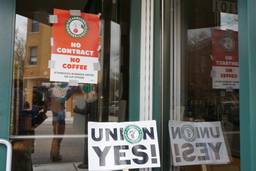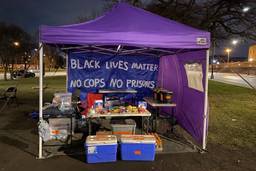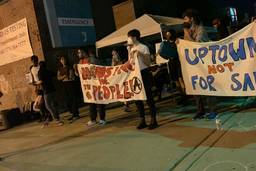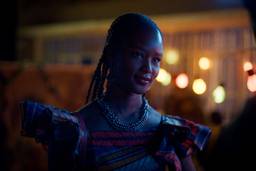Meet the New Queer Archive Creating a Home for Trans Films
While trans rights are under attack globally, Otherness Archive is creating a revolutionary space for artists that shows their “full, glorious complexity.”
Meggie Gates and Hana Urban
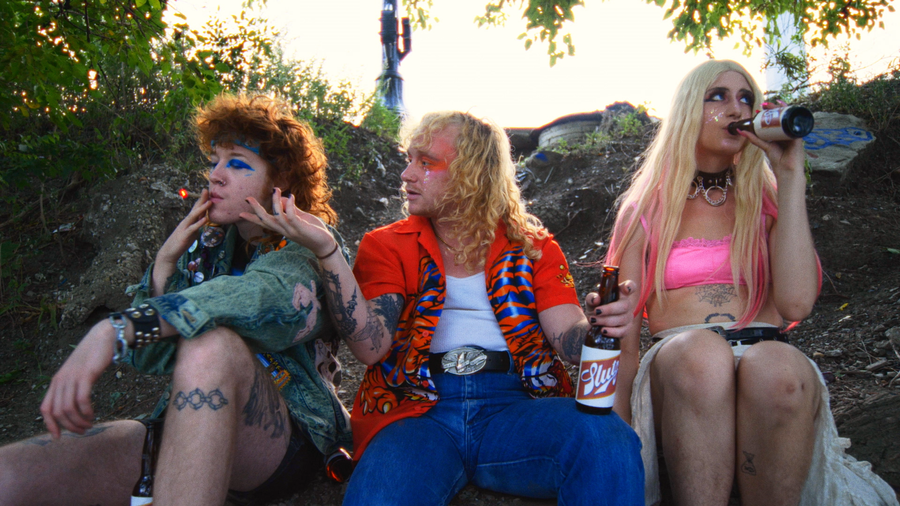
Rapid, grainy shots pan over trains going west, oversized cars pass by, a girlfriend puts lipstick on in a bathroom mirror, a series of close-ups of new trans buddies — outlaws Shy and Valentine — piece together trust, redemption and friendship in an alienating world.
Since its screening at Sundance in 2002, “By Hook or by Crook” has become a cornerstone of queer cinema — at the time of its release, few trans masculine people saw themselves represented on screen without a tragic end, much less with trans actors in trans roles. The visibility of actor-directors Harry Dodge and Silas Howard launched a new generation of queer media, driving the need for it to be publicly available and properly archived.
“By Hook or by Crook” is one piece of trans art living in Otherness Archive, a self-described “visual archive documenting queer films and its pioneers, as well as a space for contemporary filmmakers.” After noticing a lack of trans masculine representation in queer archives, founder Sweatmother organized a film screening in partnership with London Short Film Festival and T A P E Collective. “The Forgotten Archives of the Trans Masc Experience” event in January 2022 allowed Otherness Archive to grow into a larger, more comprehensive curation space with a permanent digital home. As word spread, volunteers joined Sweatmother to research and curate full-length films and shorts by emerging trans artists, including co-organizer April Lin.
Though Otherness Archive is not U.S.-based, it is nonetheless an invaluable resource for American trans people currently slammed with more than 500 anti-trans bills introduced so far this year. To name just one example: in April, Montana Rep. Zooey Zephyr, the first openly-transgender woman to be elected in the state, was barred from speaking on the House floor until 2025 after pushing back on Montana’s anti-trans legislation. In the U.K., trans people are under attack with a growing “gender critical” movement.
With trans rights in decline worldwide, Meggie Gates and Hana Urban spoke with Sweatmother and April via email to discuss the landscape of trans media, queer archival work and Otherness Archive’s current focus to highlight art that speaks to the underrepresented trans masculine experience.
Meggie Gates and Hana Urban: The Archive showcases both contemporary and historical trans content. How have historical depictions of the trans experience changed in cinema?
Sweatmother and April Lin: The oldest moving image work that we have is from 1911 and it shows women or young girls dressing as boys. We believe that cross dressing is a form of transness and was used as a form of trans identity especially in the ‘80s and ‘90s in Western cultures. We then begin to see a progression of language represented in film history. For example, in Rosa von Praunheim’s 1996 film Transexual Menace, Leslie Fienberg addresses the limitations of language and states that language will evolve, going on to say:
I’ve met people who identify as shapeshifters, who identify as a third sex, no sex, who identify as androgynous, bi-gendered, who identify as gender benders. So much exists that we don’t have the language for that I not only think the movement is going to develop beyond male to female, female to male, but really open up the concept of a spectrum between them as well.
Sadly, trans characters often function as villains or sexual objects in film. An example of this is in Sleepaway Camp, which has become a cult film for some trans people, where the main character is a trans woman. She ends up being the killer in a horrifying climax to the viewer where the movie states that she was not only the killer, but was also “born a man” — further obstructing her character and driving up hatred of trans people. It’s these examples that portray society as a place where trans people can only be viewed as villains or “creatures” that the audience must hate.
It’s amazing the Otherness Archive started from years of sifting through archival material before becoming a comprehensive resource filled with historical trans media. How did the archive begin and expand into the community?
We were trying to make a space for people to see work they were represented in. We get confused by language from other platforms that say they are spaces for women and nonbinary people. We’re not sure if certain people or platforms realize their “inclusive” language actually prevents a large group of people from entering or feeling accepted in their film spaces. I don’t want to “out” these spaces but, for example, when platforms list an open call for women and non-binary filmmakers, some gender non conforming or trans masculine people might not feel welcome to apply for those opportunities because of the generalization of identity. We’d like to think that a large part of the reason that Otherness Archive became a community is because people finally felt accepted by representations of themselves reflected on screen.
You say in your mission statement that Otherness Archive targets “trans-masculinity” in particular. What made you want to focus on that aspect of the trans experience?
Before we had received the project grant from Arts Council England, we showed a lot of short films that centered on variations of femme expression. When we hosted these screenings we were often asked by cis allies to show more trans-masculine and gender nonconforming masculinity, which inspired us to understand why there was a shortage of these works existing especially at other film festivals and screenings.
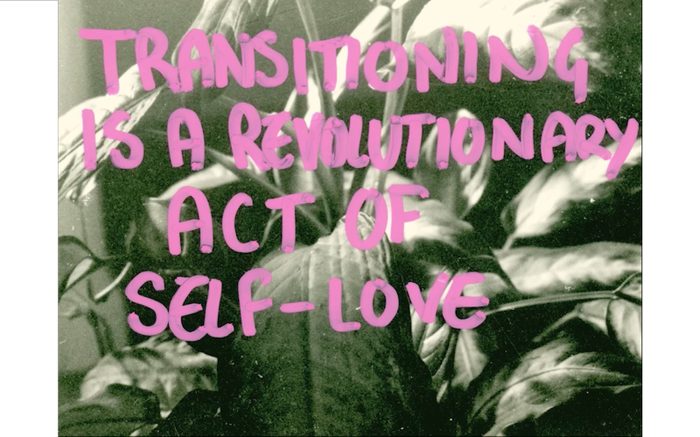
How do you keep the Otherness Archive inclusive for marginalized groups within the queer community?
There are inevitably areas that we don’t cover, as no archive can be all-encompassing. Digital curators and researchers help us fill out the gaps in the archive. At the same time, we are really passionate about making sure that the archive is a space that continues to learn in response to all the members of the community it serves.
Unless people have access to the representation of trans and queer people, they won’t have access to the breadth of information available. There needs to be more focus on access requirements and policies. Without implementing disability justice into your everyday life and within your media coverage, it doesn’t really mean anything. For example, media outlets need to do a better job of making their content more accessible for the general public but specifically for disabled and neurodivergent people. This includes creating captions, descriptive texts, descriptive images, subtitles and noting when something is spoken in a certain language.
In some ways, conversations around gender have felt very one step forward and two steps back. Progressives feel comfortable embracing fluidity while at the same time, policymakers demonize gender affirming care. How do you think current anti-trans rhetoric will shape trans media?
Trans and queer activists are mobilizing to create their own outlets that don’t obstruct the trans liberation movement. This, however, means turning to platforms with smaller followings and less funding, such as the Museum of Transology, the Digital Transgender Archive, the Lesbian Herstory Archives, Rosa Kwir, Camp Trans, Trans Masc Studies and the Small Trans Library. Otherness Archive was created because there were few outlets for trans-focused films that weren’t being tokenized. We are creating so many movements globally that further these conversations around gender on our own terms because if we don’t, who will?
Queer people are creators, disruptors and everything in between. From the sculptural performances of Cassils to the recent hype over model Laith Ashley, there’s so many mediums trans artists thrive in. Can you speak on the importance of focusing on film?
In recent years, transphobia has been increasingly normalized in mainstream media: particularly in the news or government debates, spaces that reflect decision making power in society. This, in turn, is intimately linked with the maintenance of media platforms like YouTube and Twitter. They not only condone transphobic content, but even promote them algorithmically. This dehumanizes trans people by normalizing transphobic beliefs, values and actions.
Community-led storytelling via video and film is really powerful, especially in an age where screens and videos are more prevalent and accessible than ever before. There is so much information and media being made, and often the content that gets the biggest platform is profit-driven or sponsored by brands or companies. We want to highlight works made by people who don’t have access to large budgets or large followings. There’s a specific kind of intimacy and accessibility to the video format, which means that it can communicate a lot of feelings, ideas and concepts in one container. It’s a potent means of expression and a tool for community-building.
It also feels extra crucial to create space for works made by trans people that show our experiences in their full, glorious complexity, while living in an era where trans people are being used as scapegoats by conservative politicians and public figures to maintain their followings and justify continued systemic violence. Trans stories need to be told by trans people in order for us to have full autonomy over our bodies and for trans rights to become a reality.
Now that the Archive is up and running, what do you hope will come from it?
We are determined to build the archive beyond its first iteration, which focused on the trans masculine experience. Additionally, with some of these works not being available online, we feel even more energized to create spaces where we can watch these works in real life, regardless of financial barriers placed by some distribution companies and streaming services.
We rely on community donations to sustain our archive financially. People can donate here to help us maintain this invaluable resource.
Meggie Gates is a former fact-checker and intern at In These Times. Their work has appeared in Vulture, the Chicago Reader, and Instyle Magazine. They tweet @yeehaw_meg.
Hana Urban is a freelance writer and fact-checker in Chicago. They tweet @likeplumptastic.
